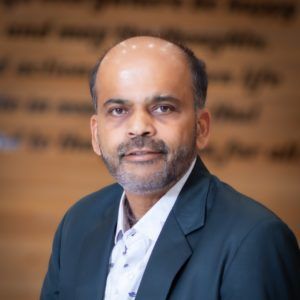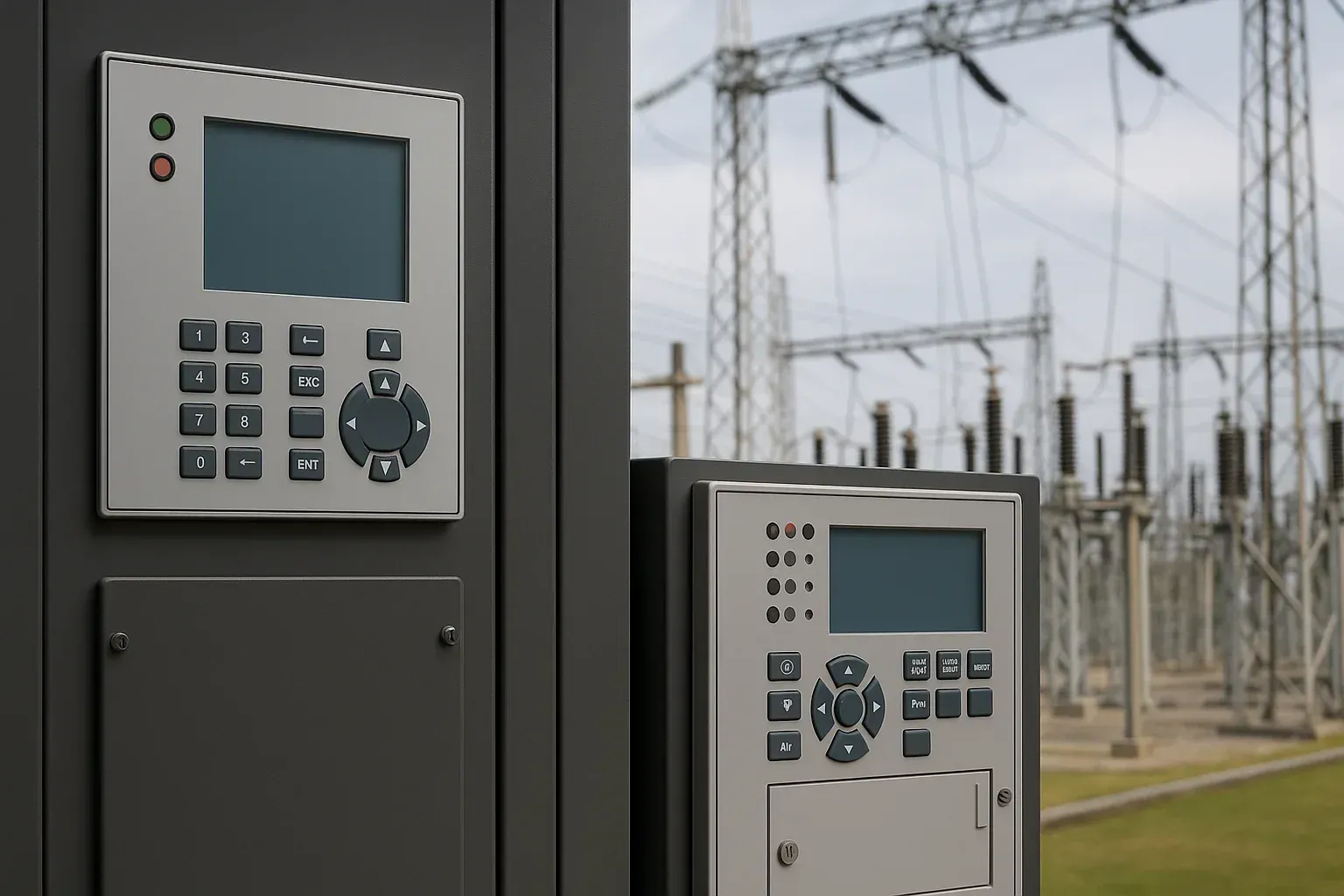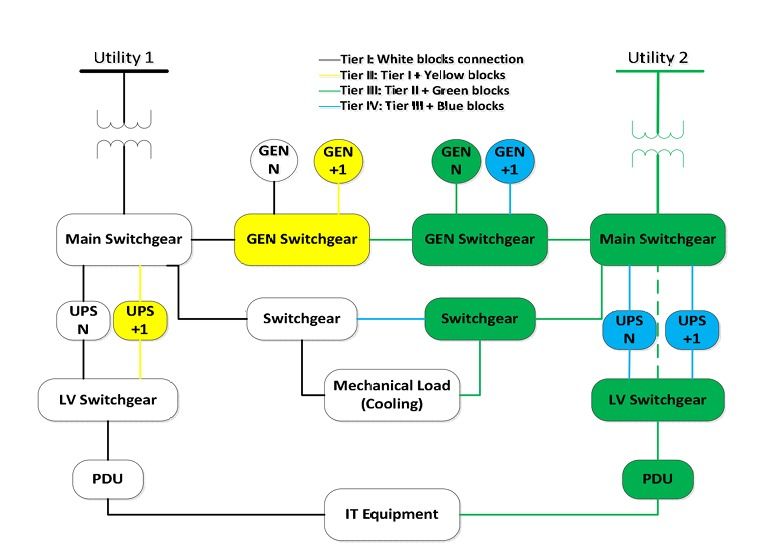A Coordinated Electric System Interconnection Review—the utility’s deep-dive on technical and cost impacts of your project.
White Paper: Gas Insulated Substations (GIS) – Enhancing Power Network Reliability and Efficiency
May 14, 2025 | Blog

Introduction
As demand grows for compact, reliable, and low-maintenance electrical infrastructure, Gas Insulated Substations (GIS) are playing a crucial role in modern high-voltage power systems. This white paper outlines the advantages, design configurations, equipment, and commissioning protocols of GIS — a core technology in today’s power substation engineering landscape.
What is a Gas Insulated Substation (GIS)?
A Gas Insulated Substation (GIS) houses high-voltage equipment like circuit breakers, disconnectors, and busbars inside metal-enclosed modules filled with SF₆ (sulfur hexafluoride) gas. Due to SF₆’s high dielectric and arc-quenching capability, GIS is ideal for HV and EHV applications, especially in space-constrained or environmentally hostile environments.
Types of Substations and Their Functions
Substations serve as essential nodes in power transmission and distribution systems, responsible for transformation, switching, protection, and monitoring. Key classifications include:
- By function: Step-up, step-down
- By voltage level: HV, EHV, UHV
- By design: Outdoor, Indoor, Hybrid
- By insulation: AIS (Air-Insulated), GIS (Gas-Insulated)
GIS vs AIS: Comparative Advantage
| Feature | GIS | AIS |
|---|---|---|
| Space | Up to 70% smaller | Requires large area |
| Maintenance | Low | High |
| Safety | High | Medium |
| Initial Cost | Higher | Lower |
| Fault Damage | More severe | Better containment |
GIS is preferred where space, reliability, and maintenance reduction are key.
GIS Busbar Configurations
Common GIS bus schemes:
- Single Bus Single Breaker (SBSB) – Cost-effective, limited flexibility
- Double Bus Single Breaker (DBSB) – Redundant tie-breaker option
- Double Bus Double Breaker (DBDB) – High redundancy, higher cost
- Ring Bus – Widely used in North America for its balance
- Breaker-and-a-Half – High reliability with complex protection
Key Switchgear Components in GIS
- Circuit Breakers (CBs) – Interrupt high current faults via SF₆
- Disconnectors & Earth Switches – For isolation and grounding
- Instrument Transformers (VTs & CTs) – Accurate measurement
- Control & Protection Panels – SCADA, relays, monitoring systems
SF₆ Gas in GIS – Benefits & Environmental Cautions
SF₆ is:
- Chemically inert and non-toxic
- Offers superior insulation
- But has high global warming potential (GWP)
Mitigation strategies:
- Continuous leak detection systems
- Gas density monitors and alarms
- Proper gas recovery and recycling protocols
GIS Installation & Commissioning Process
- Foundation Setup
- Gas Tightness Testing
- Contact Resistance Measurement
- SF₆ Gas Filling and Leak Verification
- Functional Tests: CBs, relays, switches
- Moisture & Dew Point Testing
- Insulation & Auxiliary Tests
- Final Integration, Commissioning & QA
Applications of GIS in Power Networks
GIS is best suited for:
- Urban substations (space-constrained)
- High-pollution or coastal zones
- Underground or enclosed installations
- Industrial zones
- Emergency/mobile substations
Conclusion
Gas Insulated Substations significantly enhance grid reliability, reduce maintenance, and support compact design needs. When engineered, tested, and monitored correctly, GIS offers long-term performance for utilities, developers, and EPC firms operating across urban and high-risk environments.
Frequently Asked Questions (FAQs)
What is GIS in substation design?
A substation design using SF₆ gas in compact, insulated modules to house high-voltage components safely.
Why use SF₆ gas?
Due to its superior arc-quenching, dielectric strength, and long-term stability in compact systems.
Main GIS advantages over AIS?
Less space, minimal maintenance, higher safety, and pollution resistance.
GIS voltage range?
Typically 30 kV to 500 kV.
SF₆ concerns?
High GWP — requires proper gas handling, monitoring, and recovery.
Common busbar configurations?
SBSB, DBSB, DBDB, Ring Bus, Breaker-and-a-Half.
How is GIS maintained?
Routine density checks, leak tests, and insulation verification.
Difference: Dead tank vs. Live tank CB?
Dead tank: interrupter grounded. Live tank: interrupter at line voltage.
GIS usage examples?
Urban setups, coastal zones, mobile units, underground networks.
How is contact resistance tested?
With a micro-ohmmeter applying DC current.
Key commissioning tests?
Tightness, contact resistance, dew point, gas leak, relay testing, etc.
Disconnector safety tip?
Always open CB first — prevents dangerous fault arcs.
Can GIS connect directly to transformers?
Yes — with SF₆-to-oil bushings for interface.
Gas pressure monitoring?
Density sensors with alarms and thresholds.
GIS standards?
IEC 62271 series, utility-specific specs, and ANSI ratings.
Case Studies: Real-World GIS Deployments
Case 1 – Urban Substation in Chicago
- Problem: Downtown space constraints
- Solution: 170 kV GIS with Ring Bus
- Result: 70% area reduction, high load reliability
Case 2 – Industrial Facility GIS (Confidential)
- Challenge: Dust, corrosion, harsh climate
- Solution: Sealed GIS with redundant SF₆ sensors
- Result: 99.98% uptime over 5 years
Case 3 – Mobile GIS for Disaster Recovery (California)
- Need: Emergency deployment post-wildfire
- Solution: 34 kV skid-based mobile GIS
- Result: Re-energized 40,000 homes in 72 hours
Case 4 – Retrofit in Aging Substation (Confidential)
- Problem: No extra land for expansion
- Solution: DBDB GIS integrated into existing layout
- Result: 50% space savings and modernized reliability
Case 5 – Coastal Substation
- Challenge: Salt corrosion risk
- Solution: SF₆ gas monitoring + corrosion-proof enclosures
- Result: 10 years of operation without major service
Ready to explore GIS for your project?
Our engineering team has deployed GIS solutions for urban, industrial, and emergency use cases across the U.S.

About the Author:
Sonny Patel P.E. EC
IEEE Senior Member
In 1995, Sandip (Sonny) R. Patel earned his Electrical Engineering degree from the University of Illinois, specializing in Electrical Engineering . But degrees don’t build legacies—action does. For three decades, he’s been shaping the future of engineering, not just as a licensed Professional Engineer across multiple states (Florida, California, New York, West Virginia, and Minnesota), but as a doer. A builder. A leader. Not just an engineer. A Licensed Electrical Contractor in Florida with an Unlimited EC license. Not just an executive. The founder and CEO of KEENTEL LLC—where expertise meets execution. Three decades. Multiple states. Endless impact.
Services

Let's Discuss Your Project
Let's book a call to discuss your electrical engineering project that we can help you with.

About the Author:
Sonny Patel P.E. EC
IEEE Senior Member
In 1995, Sandip (Sonny) R. Patel earned his Electrical Engineering degree from the University of Illinois, specializing in Electrical Engineering . But degrees don’t build legacies—action does. For three decades, he’s been shaping the future of engineering, not just as a licensed Professional Engineer across multiple states (Florida, California, New York, West Virginia, and Minnesota), but as a doer. A builder. A leader. Not just an engineer. A Licensed Electrical Contractor in Florida with an Unlimited EC license. Not just an executive. The founder and CEO of KEENTEL LLC—where expertise meets execution. Three decades. Multiple states. Endless impact.
Leave a Comment
We will get back to you as soon as possible.
Please try again later.
Related Posts














